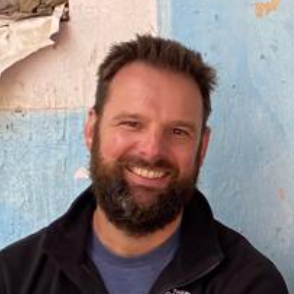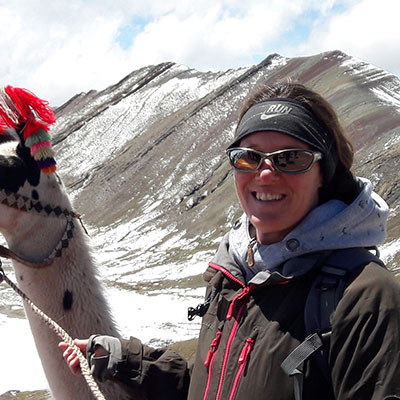Dental Capacity Building: Partial and Total Dentures for the Population of Marampaqui
According to the National Epidemiological Study carried out in the years 2001-2002(1), the prevalence of dental caries is 90.4%(2), as a consequence we see missing teeth in adults from Marampaqui. The Con Corazón Medical Center has already implemented measures to prevent it through a dental office and oral health prevention and promotion activities.
Tooth loss is a reflection of a person's history of dental disease and its treatment by dental services throughout life(3). Tooth loss reflects not only dental disease, but also the attitudes of patients and dentists, the dentist-patient relationship, the availability and accessibility of dental services, and the prevailing philosophies of dental care(4).
The majority of adults in Marampaqui have a high prevalence of missing teeth so it is was not difficult selecting for our pilot project patients who need dental prosthetics. They only visit the dentist for teeth extractions and not for teeth fillings. Therefore, they have become accustomed to smiling and chewing with the few remaining teeth. Unfortunately, due to their economic condition, they are not able to afford a fee for any type of denture, otherwise that produces financial hardship to them.
In many developing countries, a lack of human and financial resources prevents the implementation of effective oral health programs. Capacity building involves achieving measurable and sustainable results in training, research and care delivery. Actions include advancing knowledge, attitudes and skills, broadening support, and developing cohesion and partnerships(5).
In these countries, there are clear and growing gaps between dental needs and the existing capacity to meet these needs in terms of financial and human resources. Concerted efforts are required to improve access to oral health care through appropriate financing mechanisms and donor support. Peru is no exception, so there is a need to implement capacity building and encourage the health workforce to provide evidence-based services while promoting community participation and a multidisciplinary approach(6).
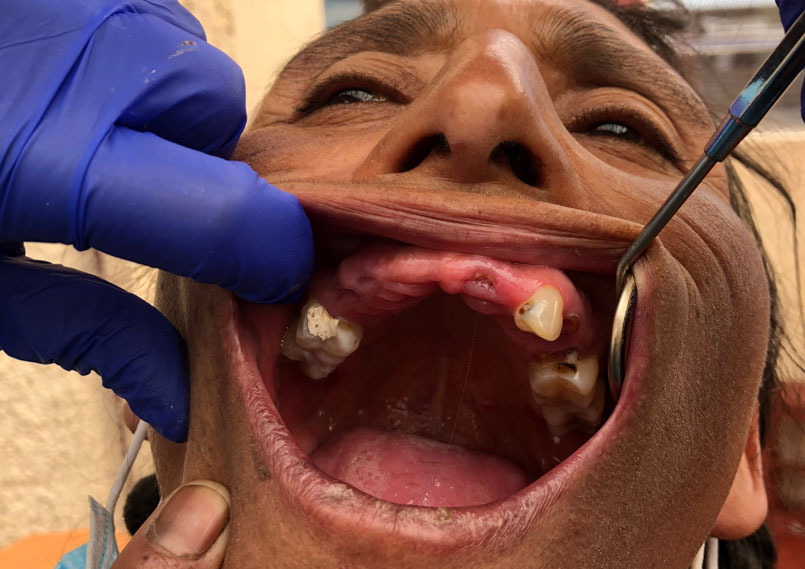

Dental capacity Building
Rehabilitating the totally or partially edentulous patient with dentures can be a daunting task for many dentists. The two most common reasons are:
- Predictability of comfort, esthetics, and/or function is not as easily achieved as with fixed prosthetic restoration cases.
- Dental school education, unfortunately, has failed to consolidate the principles of removable and full dentures.
This course has been designed to apply the basic principles and techniques so that the dentist has a higher level of confidence when solving their clinical cases. In this way, knowing where the different elements should be, including the teeth from an aesthetic, functional and phonetic point of view, is essential for success.
Through clinical cases in patients, who came from the village of Marampaqui, the participants were able to consolidate their skills in a step-by-step process to manufacture predictable and comfortable dentures. The objective was not only learning but also service to the most vulnerable populations, in this case the village of Marampaqui, Ocongate, Cusco.
Objectives
- Return the chewing ability and aesthetics of the beneficiaries from Marampaqui.
- We took advantage of this opportunity by training dentists through the elaboration of dental prosthetics. The selected dentists were professionals who did not have much experience in the area of dental prosthetics and those who showed interest in learning and/or improving their techniques. We invited dentists who were selected based in a personal interview.
- This project is the beginning of many educational activities for dentists with an emphasis on social projection.
- After this activity, participating dentists are able to deal with cases of patients who need dental prostheses in a more effective based on evidence way. This improves the results of future treatments for their own patients. For future projects, these dentists will be considered for further education and social activities.
- It has been always our intention to encourage volunteer work by welcoming participants from overseas and locals such as general dentists, dental hygienists, dental assistants, students and all people who wants to collaborate with the project. That would increase our dental health workforce. The benefits for the participants included continuing dental education, hands on and most important the satisfaction to help out the poor and needy.
Brief description of the course
In this course, the principles for the teeth preparation were analyzed. The course highlighted the knowledge and skills that participants needed to assess and treat patients who require prosthetics, including developing a treatment plan.
The course is led by Dr. Karen Pintado, Dr. Jenny Reinoso and Dr. Saulo Gamarra who have extensive clinical and academic experience in the area of Prosthetics. Together, they provided the training along with an experienced staff.
The project was carried out in different phases and places, including the village of Marampaqui (Ocongate) and the Con Corazón dental clinic (Cusco). Con Corazón institution provided the patients and all the materials needed. Participants brought the instruments needed.


This course covered the following topics:
- Diagnosis and prognosis
- Biological, mechanical and aesthetic principles and considerations
- Preparation and conditioning of the oral cavity.
- Sequencing of clinical treatment:
- Primary Impressions
- Parallelization
- Preparation of individual trays
- Biostatic preparation
- Definitive impressions
- Preparation of base plate and impellers / metallic structure test
- Intermaxillary records and mounting in articulator
- Threading test / functional, phonetic and aesthetic test
- Installation and controls
- Hygiene and maintenance instruction - Helpful clinical tips and troubleshooting
- Laboratory considerations
Inclusion criteria for patients
Patients were recruited trough community meetings and local radio. The patients screening was done by Con Corazón dental team.
Potential patients who really wanted dental prosthesis, have done maintenance work in our greenhouse or one of our current community projects or around our Medical Center in Marampaqui. The dental team did the selection at Con Corazón Medical Center. Their mouths have been conditioned. Other characteristics to be included in our list of patients were:
- Patients preferably from Marampaqui and nearby area.
- We included partially or totally edentulous patients.
- Patients with periodontal disease were not eligible.
- We provided twenty two dentures in twelve patients.
- Patients with good oral health conditions to ensure treatment success. The mouth conditioning were done by Con Corazón dental team.
Inclusion criteria for participating dentist and dental students
- General dentists willing to enroll the activity, were interviewed either personal or through video conference.
- General dentist who work in rural areas have had a special consideration for the application.
- Dental students were selected based on their interest level. They acted as assistants only. There were experienced dental assistants provided by Con Corazón.
- There was a preference for dentists who have previously volunteered with Con Corazón.
Quality controls and certification
The instructors are experienced professionals. They were asked to submit written feedback via a questionnaire at the end of the course, which was used to monitor the quality of course teaching. The participant obtained a certificate upon completion of the course, which was accredited by Con Corazón and the Swiss dental foundation SDI - Secours Dentaire International.


The patients selected were brought by bus from Marampaqui to the city of Cusco, according to our inclusion criterion, to carry out with their treatments.


Chronology
Pre-selecction and selección in Marampaqui (25th April 2022 / 3rd May 2022)


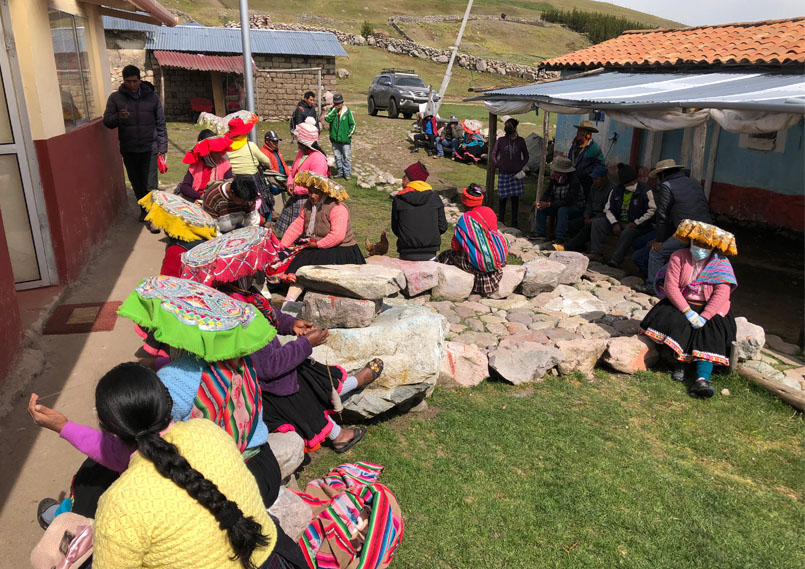
Mouth conditioning at Con Corazón dental clinic (7th May 2022)


Theory I and Clinic I: Primary impressions and trays elaboration (12th May 2022)


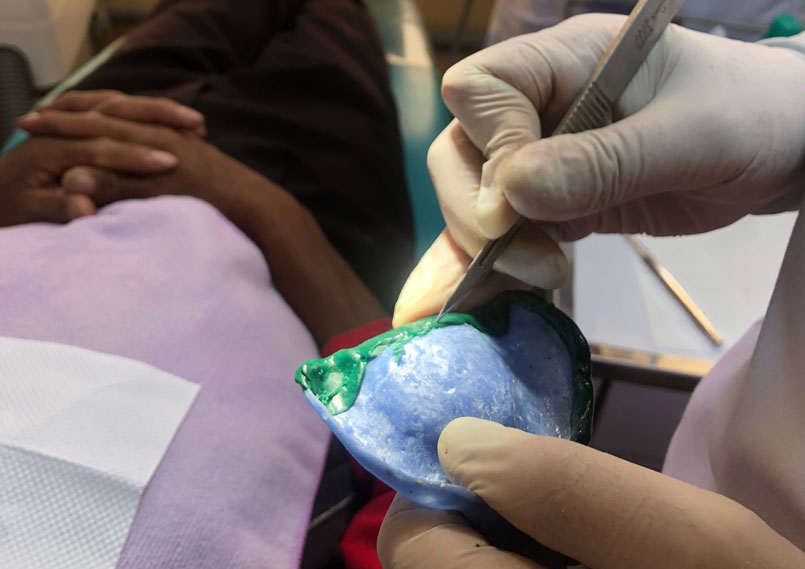
Theory II and Clinic II: Biostatic preparation and final impressions (13th May 2022)


Theory III and Clinic III: Intermaxillary registration (21st May 2022)



Theory IV and Clinic IV: Teeth try in (31st May 2022)
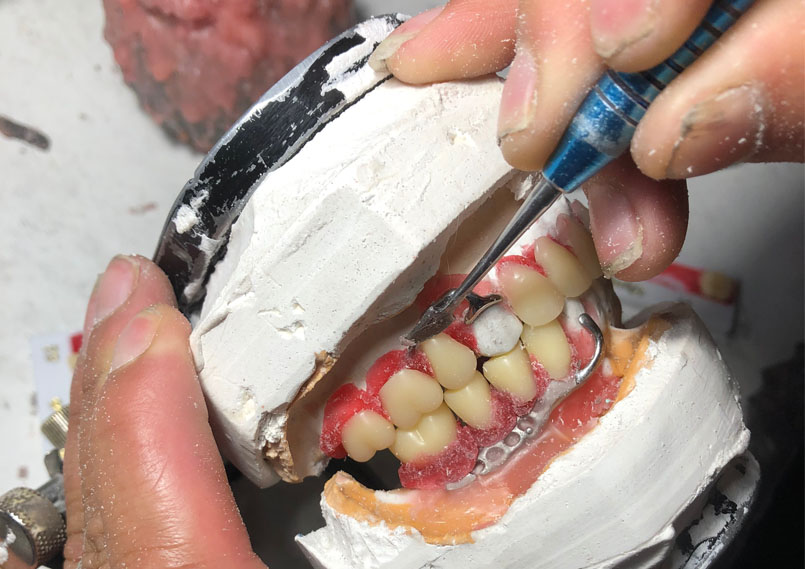

Theory V and Clinic V: Installation and first follow up (4th June 2022)



Clinic VI: Second follow up in Marampaqui (7th June 2022)


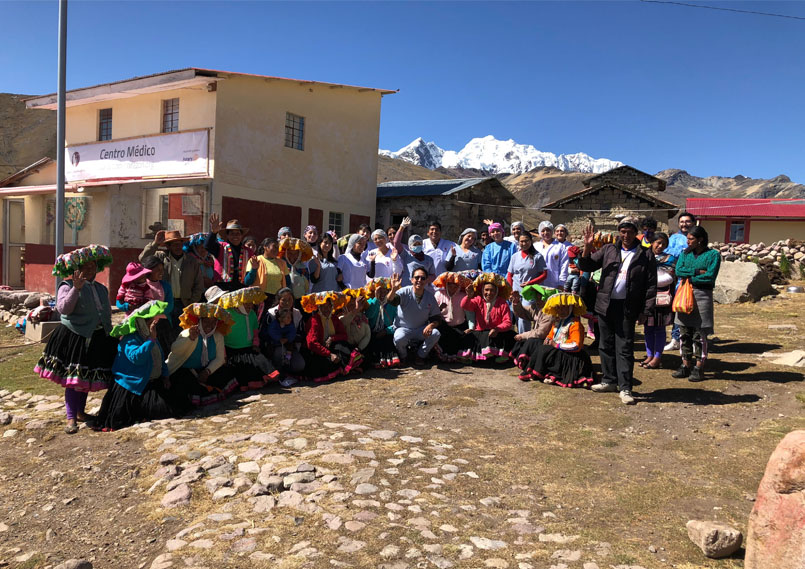
Third follow up, after 3 months. This has been done by the Con Corazón team in Marampaqui (September 2022)



Cases (in English)
- Case 01: Male, 64
- Case 02: Male, 55
- Case 03: Female, 47
- Case 04: Female, 61
- Case 05: Female, 55
- Case 06: Female, 46
- Case 07: Male, 40
- Case 08: Female, 31
- Case 09: Female, 21
- Case 10: Female, 44
- Case 11: Male, 26
- Case 12: Male, 62
Summary and benefit
Trough the implementation of this project, we contributed improving our patients chewing ability and aesthetics. The personal satisfaction of volunteers, learning experience and team work, benefited the residents of Marampaqui and the professional dental community of Cusco and our supporters abroad. The academic and social projection of Con Corazón and SDI within the local community has been improved and strengthened. There is a growing interest within the participants to keep taking such a unique continuing education program.
Our track record and managerial competencies qualify us to make this project a success and others of greater magnitude.
References
- Ministerio de Salud. Documento Técnico Plan Nacional de Salud Bucal: Sonríe Siempre Perú 2001- 2002. Lima, Perú: MINSA; 2005.
- World Health Organization. World Oral Health Report 2003. Geneva: World Health Organization; 2004.
- Petersen PE, Bourgeois D, Ogawa H, Estupinan-Day S, Ndiaye C. The global burden of oral diseases and risks to oral health. Bull World Health Organ. 2005 Sep; 83(9):661-9.
- Baelum V, van Palenstein Helderman W, Hugoson A, Yee R, Fejerskov O. A global perspective on changes in the burden of caries and periodontitis: implications for dentistry. J Oral Rehabil. 2007 Dec; 34(12):872-906; discussion 940.
- Mumghamba, E & Joury, Easter & Fatusi, Olawunmi & Oluoch, Jakinda & Onigbanjo, R & Honkala, Sisko. (2015). Capacity Building and Financing Oral Health in the African and Middle East Region. Advances in dental research.
- Mills A, Ataguba JE, Akazili J, Borghi J, Garshong B, Makawia S, Mtei G, Harris B, Macha J, Meheus F, et al. 2012. Equity in financing and use of health care in Ghana, South Africa, and Tanzania: implications for paths to universal coverage. Lancet. 380(9837):126–133.
September 2022




